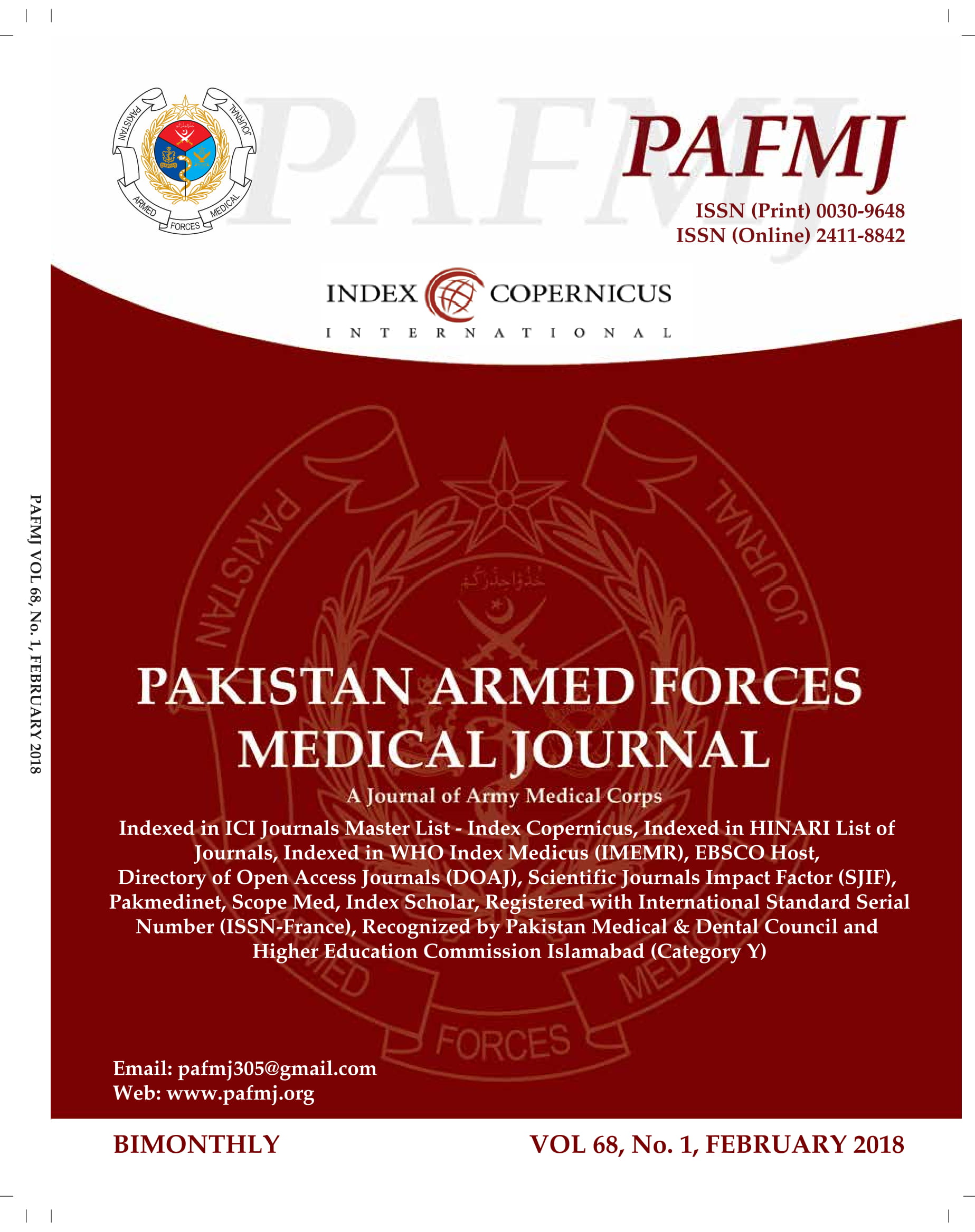THE RELATIONSHIP BETWEEN DEPRESSION, ANXIETY, STRESS AND SELF HARM AMONG COLLEGE STUDENTS: A CROSS-SECTIONAL SURVEY
Depression, Anxiety, Stress And Self Harm
Keywords:
Anxiety, DASS, Depression, Self-harm, StressAbstract
Objective: The aim of present study was to assess the relationship between depressions, anxiety, and stress and
self-harm. The study also aimed at finding gender and educational year differences on the basis of main study
objective.
Study Design: Cross sectional study.
Place and Duration of Study: Colleges of Jhelum, Jhelum from Sep 2016 to Feb 2017.
Material and Methods: Deliberate Self-harm Inventory was used to measure self-harm behaviors, while
Depression, Anxiety and Stress Scale was used to assess depression, anxiety and stress among adolescents. Data
was analyzed using SPSS 20.
Results: A sample of 400 was drawn by sensitivity and specificity calculator using consecutive non probability
sampling, out of which 322 participants (128 male and 194 female students) from Jehlum, Punjab completed the
survey. The data was collected over the period of six months and then analyzed. Results indicated that a slightly
negative correlation exist between depressions, anxiety, and stress and self-harm (p<0.5, r=-0.357). Among
demographic variables, year of education and family monthly income did not show any difference with respect to
depression, anxiety and stress. But they revealed a statistical significant difference with respect to gender
(p=0.005, p<0.05). Females scored more on depressive, anxiety and stress (17.03) than Male (14.77). Similarly
gender, family monthly income and educational year did not have significant effect on the score of self-harm.
Self-harm revealed a statistically significant difference with respect to residential area. Urban students showed
more self-harming behaviors than rural students with a mean of 33.37.
Conclusion: Present study suggest that there is marginally negative correlation between self-harm and
depression, anxiety and stress but it has not proved by this study that whether self-harm protects student from
depression, anxiety stress or other variables affect this relationship. Self-harm did not differ with respect to
gender but students had more scores on depression, anxiety and stress than male.











